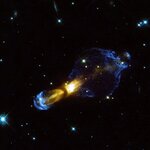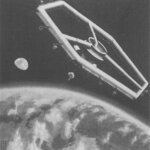Space

Let's see what would be needed to make Earth as uninhabitable as Mars? This disaster would need to
Remove 99% of the Earth's atmosphere, and all of its oxygen.
Remove all the water in the oceans, leaving just the Antarctic ice cap - and even then that's too much ice. ExoMars with its ground penetrating radar discovered that both polar ice caps have layers of ice up to 3.5 kms deep, and that there are thick layers of ice extending over a much larger area than the visible ice caps, mixed with soil (enough frozen water to cover entire surface of Mars with liquid to a depth of 11…

I've already written about how Mars is great to explore, but NOT a great place to live. Nor is anywhere else. The best place to live and to shelter from cosmic or human created disasters is on Earth itself. So, I think our focus should be on exploring the solar system. Let's set up colonies only when they are useful for exploration.
Our rovers are our "eyes" in the solar system. They can see much better than we can. The Mars landscape is dull and uninteresting to the unaided human eye. Everything is a dull dark brownish colour. Sometimes described as butterscotch but think of…

A common space weather phenomenon on the outskirts of Earth's magnetic bubble, the magnetosphere, has a much different effect on Venus.
The giant explosions, called hot flow anomalies, can be so large at Venus that they're bigger than the entire planet - and they can happen multiple times a day.
Earth is protected from the constant streaming solar wind of radiation by its magnetosphere.
Venus, on the other hand, is a barren, inhospitable planet, with an atmosphere so dense that spacecraft landing there are crushed within hours. Venus has no magnetic protection.
"Not only…

In 1964, the physicist John Bell tackled locality and the disparity between classical physics and quantum mechanics, stating that if the universe is based on classical physics, the measurement of one entangled particle should not affect the measurement of the other.
Locality theory said there is a limit to how correlated two particles can be. Bell devised a mathematical formula for locality, and presented scenarios that violated this formula, instead following predictions of quantum mechanics. Since then, physicists have tested Bell’s theorem by measuring the properties of entangled quantum…

Calling Bill Haley and the Comets, because PSR J0738-4042, which lies 37,000 light-years from Earth in the constellation of Puppis, is being rocked around the clock.
As in being constantly hit by asteroids.
It's not a great place. The environment around this star is especially harsh, full of radiation and violent winds of particles, say the researchers who used telescopes in South Africa and Australia to find the assaults.
"One of these rocks seems to have had a mass of about a billion tonnes," saidAustralian Commonwealth Scientific and Industrial Research Organisation's (CSIRO)…

How smart do you have to be to convince Albert Einstein to change his mind?
Pretty smart. He never invoked 'the science is settled' or ridiculed the political party of physicists who insisted the universe was expanding. It was static until someone proved otherwise.
Eventually they did, but it was not the urban legend that claimed in 1931 American astronomer Edwin Hubble showed Einstein his observations of redshift in the light emitted by far away nebulae - what we call galaxies now. The tipping point was instead a tortuous thought process following many encounters with some of the most…
The origin of life remains a great mystery in biology. Continental drift has erased most of the record, until all that's left of the first half billion years of evolution are some millimeter sized zircons embedded in later rocks. These can tell us the composition of the early Earth's atmosphere (through pockets of air trapped in the crystals) but not much else. And there is much to discover. The most primitive microbes we know are far too large to be the first living cells, and modern DNA based life is far too complex.
Mars is one of the best places to go to try to fill in this gap in…

Large stars go supernova but smaller stars sometimes end up as planetary nebulae – colorful, glowing clouds of dust and gas.
These nebulae have been observed to often emit powerful, bipolar jets of gas and dust. But how do spherical stars evolve to produce highly aspherical planetary nebulae?
A hypothesis published in the Monthly Notices of the Royal Astronomical Society by a University of Rochester undergraduate student and a professor states that only "strongly interacting" binary stars – or a star and a massive planet – can feasibly give rise to these powerful jets.
When these smaller…

Though the evidence shows that people are not really different during a full moon, like homeopathy or organic food benefits happen just often enough that people are convinced by the placebo/nocebo effect to believe there must be something to it.
And science has its moon quirks too. Why, for example, would signals bouncing off the moon be so faint on full moon evenings?
The answer is in an eclipse, which has had its own share of superstitious attributions.
Researchers have aimed laser beams at suitcase-sized reflectors placed on the moon by Apollo astronauts and unmanned Soviet rovers. By…

You've probably seen movies of orbital space habs spinning for artificial gravity. But did you know, that nobody has ever tested this to see how it works out in practise? We know that weightlessnes is bad for health, especially long term, with many potentially serious medical issues. But do we need full g, or Mars g, or lunar g to stay healthy? Nobody knows. Can we cope with a spinning hab a few meters across or do we need to think about a huge hab or tether system a couple of hundred meters across or larger? Again nobody knows.
You would think that somebody must have tried it out by…